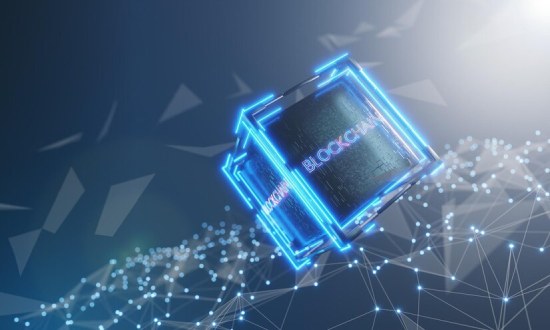-
Decentralized exchanges have emerged as a secure method for exchanging coins without the need for an exchange-based wallet. Instead, a noncustodial wallet that only stores a secret key can be used to exchange cryptocurrencies. Order books and automated market makers (AMMs) are two trading mechanisms that decentralized exchanges (DEXs) use to facilitate and safeguard transactions. However, advancements like atomic swaps, powered by smart contract development, a peer-to-peer exchange method in which two or more parties can directly exchange cryptocurrencies through their wallets, have helped decentralized exchange platform development gain more user adoption.
After incorporating the atomic exchange into its system, Monero (XMR), one of the biggest privacy-focused cryptocurrencies, saw a 20% price increase.
Understanding Atomic Swaps
Atomic swaps are a method for rapidly transferring cryptocurrencies between various blockchain platforms. This process, where the trade takes place through a smart contract between two personal cryptocurrency wallets, is frequently referred to as atomic cross-chain trading. It uses various blockchains in a peer-to-peer (P2P) transaction mechanism.
How are Atomic Swaps Conducted
Atomic refers to a procedure that will either finish or not begin at all. To put it another way, we can think of the atomic swap as a function that makes sure all prerequisites are met before a transaction happens.
The use of the smart contract, an automated method to enforce conditions during a transaction, make atomic swaps feasible.
The hashed timelock contract (HTLC), a two-way virtual safe function used in atomic swaps, employs the hash function, a sophisticated form of algebraic encryption. Additionally, it applies a deadline by which the transaction is canceled if any parties don't meet the requirements within the allotted time.
For instance, two parties might decide to set an atomic swap's time limit at one hour. The contract stipulates that if either party fails to meet all of the trading requirements within an hour, the other party will receive the crypto coins and return them to the original owner.
Also, Check | Legolas Hybrid Exchange Conducive Marketplace for Institutional Investors
The HTLC with the following protocols is used by the atomic swap as a trustless trading system:
Hashlock Key:
The hashlock key ensures that a transaction is completed once both parties have submitted their respective cryptographic proofs.
Timelock Key:
The timelock key is a safety feature that establishes a completion date for a specific transaction. As a result, it attests to the fact that in the event the swap isn't accomplished for one or more reasons before the deadline, the traders will receive their invested coins back.
The atomic swap can be processed either on-chain or off-chain. The atomic swap happens via the on-chain technique on a single blockchain network. On the other hand, the off-chain atomic swap uses a secondary layer to carry out the transaction. This kind of atomic swap makes use of bidirectional payment lines, a system similar to the Lightning Network.
Also, Explore | Must-Have Order Types in a Crypto Exchange
Developing DEX (Decentralized Exchanges) with Atomic Swaps
Building decentralized exchanges with the ability to work with several account systems, each with its blockchains, is possible with atomic swaps. A reliable protocol that enables the creation of an order book in a decentralized manner is necessary for a DEX using atomic swaps so that any offer to sell or buy cryptocurrency can be made.
The atomic swap protocol's principal goal is to enable users to securely conduct an exchange even when they don't trust one another. Thus, this protocol includes the following requirements:
- Counterparties should make use of hashlock-enabled smart contracts that provide them the option to set different time delays.
- Parties should use the same cryptographic hash function so that the contract is appropriately executed while performing a transaction between two distinct systems.
- To debate the exchange terms off-chain, users must have a secure communication channel.
Also, check | Cross-Chain Swaps | Empowering Crypto Exchange Development
The major benefits of atomic swaps are:
- Facilitate complete decentralization that enables crypto enthusiasts to exchange crypto assets without depending on intermediary arbitration
- Provide the capability to either execute trades directly among separate blockchain platforms with distinct native crypto coins or execute via off-chain channels, generally known as the subsidiary of a blockchain platform
- Helps reduce trading charges. It is because atomic swaps eliminate the transaction fees associated with third-party services
- A means for users to have complete control over their cryptocurrency at each step. It eliminates vulnerabilities related to centralized exchanges.
You may also like | P2P Crypto Exchange Development | The Future of Digital Trading
Atomic Swaps Explained: A Real-Life Example
A real-life example can help get a better understanding of atomics swaps in decentralized crypto exchanges.
For instance, Alice wants to trade her coins with Bob's fiat money. Now, let's see how this transaction would take place with the atomic swap technique.
Now, we assume that they deposit their coins in an address that we consider a vault. When they deposited their crypto coins in the vault, they in reality deposited their funds in a public vault. However, no one has access to the vault and its content is safe. Only Bob and Alice have the key to open the vault.
Now, Bob and Alice share their addresses and verify the content as per the promise. Now, both parties will have to insert their keys to unlock the vault. If any one of them fails to do so, the vault will remain unlocked.
Also, the vault will remain open for a limited period. Both users need to make the transaction within an allotted time. Therefore, the transaction becomes fail-proof as either it will execute when both parties agree or it won't get executed at all. There is no partiality in the transaction.
Also, Read | The Rise of P2P Crypto Exchange after the FTX Debacle
Difference between Off-Chain and On-Chain Atomic Swaps
As mentioned previously, a user can execute an atomic swap on a blockchain or it can be on an offshoot of a blockchain.
Atomic swaps taking place on offshoots of a blockchain are known as off-chain.
Contrarily, transactions taking place on a blockchain are known as on-chain.
A blockchain must support HTLC when an on-chain transaction takes place and the hash algorithm of the currencies have to be the same.
On the contrary, when an off-chain Atomic Swap takes place, it uses a layer 2 solution. It is essentially a technology that creates an open channel of communication between two transacting parties.
One such instance of an atomic swap is a transaction that took place between Bitcoin and Litecoin. Instead of a blockchain, it used the Bitcoin Lightning Network.
Watch | Crypto Swap Platform Developed by Oodles
The Bottom Line
With this helpful information, we hope you now know what atomic swaps are. The atomic swap has opened the door for more privacy and security in crypto trading, despite some drawbacks to be aware of. Users can exchange over 7,800 different cryptocurrencies thanks to its inter-chain operability. As a result, the atomic swap and other blockchain connectors will be crucial in the ongoing development of the cryptocurrency sector.
For more information on crypto exchange development or to get started with atomic swaps integrated DEX development, connect with our skilled crypto exchange and smart contract developers.

Our Offices
INDIA
Emaar Digital Greens, Sector 61,
Gurugram, Haryana
122011.
Welldone Tech Park,
Sector 48, Sohna road,
Gurugram, Haryana
122018.















